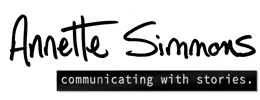1. Attract a group of interested community members to meet for a day. Be inclusive. Invite as diverse a group as possible.
2. Come together and talk about what is going on in your community. Discuss the importance of understanding the story of who you are and why you are here. Use your time to tell a few stories about the community, explore that issues are important to you. Explain that this process will lead to unpredictably powerful outcomes only if it isn’t constrained by outcomes based in current thinking.
3. Distribute disposable cameras one per person or ask people to use their own cameras to take photos of your community – the people, places, events – that tell the stories of who you are.
4. Come back together within
5 weeks to share the photos and stories you think best describe your community. Set aside a whole day for this process.
6. Use a democratic selection process to narrow the PhotoStories down to a manageable number. Thirty worked well for us.
7. Ask each of the selected photographers to tell the story that goes with their photo. Use time limits so that everyone gets an equal chance. Three minutes is a good limit.
8. Ask the group to spend one hour examining how you usually discuss things and choosing 3-5 Dialogue Agreements so that the conversation you have as a group will be different, more creative, more tolerant and more inclusive than usual.
10. Set aside two hours for a dialogue process. Make sure that no one person and no one faction dominates the dialogue. Let the PhotoStories prompt the telling of other stories. Wander around the many stories of your community without attempting to summarize their meaning or choosing one representative story. When tension occurs welcome it as an opportunity to better understand the conflicts within your story. End the dialogue at it’s point of natural closure.
11. Allow one hour at the end of the day to harvest new thoughts and ideas that evolved from your dialogue. Ask yourselves: If this is our story, then what actions/behaviors go with that story? Who else needs to know our story? Are there other stories we need to discover?
12. Use your photos and stories to spread your story and create opportunities for new dialogues in your community and with other communities.
